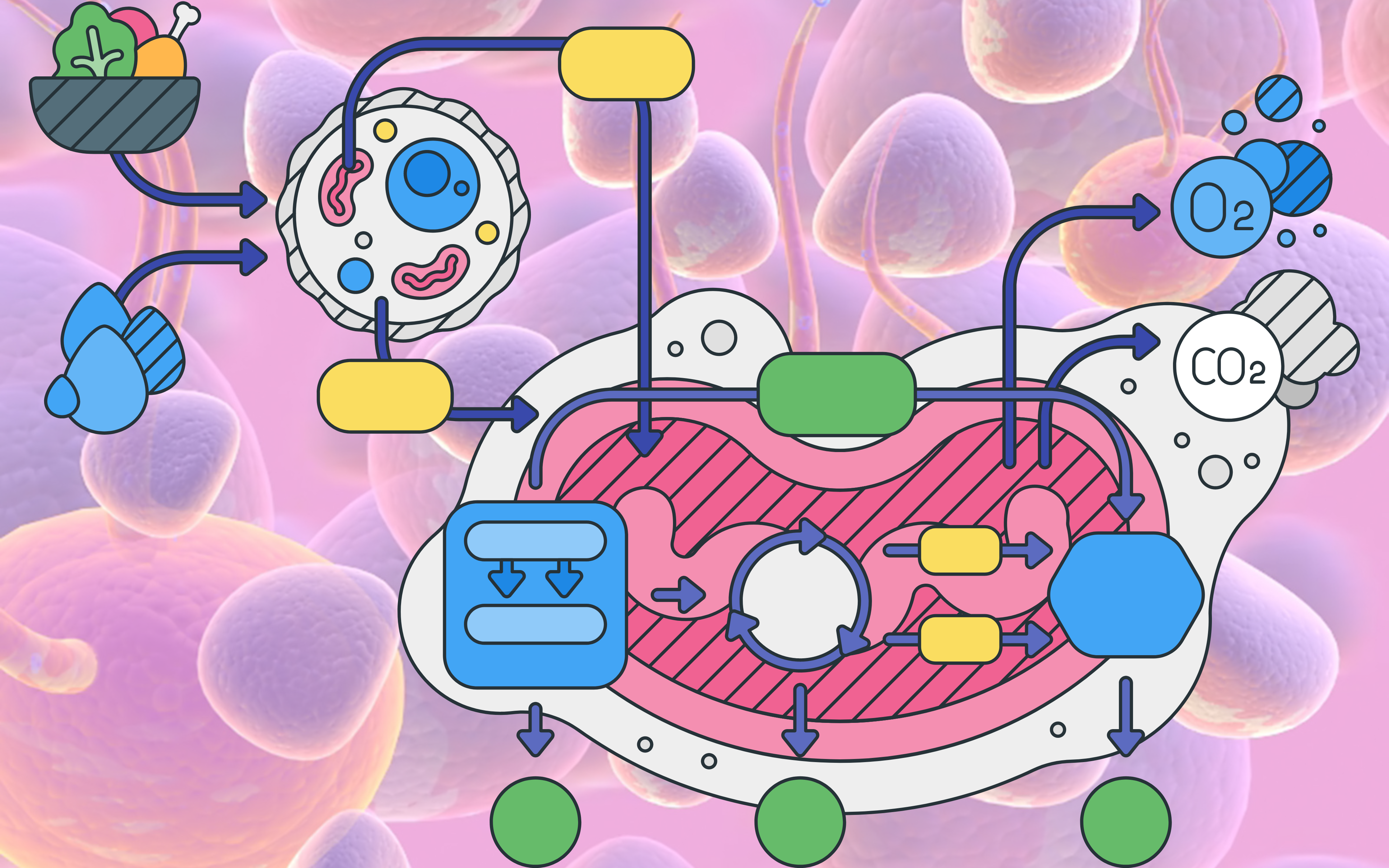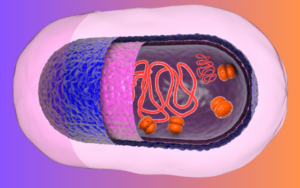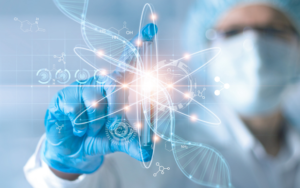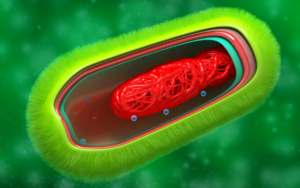Welcome to the fascinating world of cellular respiration, the life-sustaining process that lies at the heart of all living organisms. Cellular respiration is a complex metabolic pathway that fuels cells with the energy they need to perform vital functions. From the tiniest microbe to the most intricate multicellular organism, this fundamental process drives the cycle of life itself. In this introductory exploration of cellular respiration, we will unravel its mechanisms and discover how it converts glucose into the universal energy currency, adenosine triphosphate (ATP), making it essential for the survival and growth of every living being.
Cellular respiration is a tightly regulated series of biochemical reactions that occur within the cells of plants, animals, and even some microorganisms. Through a series of steps, including glycolysis, the Krebs cycle, and oxidative phosphorylation, cells efficiently extract energy from glucose and other organic molecules. While cellular respiration predominantly operates in the presence of oxygen (aerobic respiration), some organisms can carry out a modified version of this process without oxygen (anaerobic respiration). Understanding cellular respiration not only provides insights into the intricacies of life but also sheds light on various health conditions and diseases associated with energy production. Join us on this captivating journey as we delve deeper into the world of cellular respiration and unlock its secrets for a better understanding of life’s energetic engine.
Table of Contents
The Basics of Cellular Respiration
Cellular respiration is a complex set of metabolic reactions that occur in the cells of all living organisms. It involves the breakdown of glucose, derived from the food we eat, into adenosine triphosphate (ATP), the universal currency of energy in cells. This process occurs in three main stages: Glycolysis, the Krebs cycle (Citric Acid Cycle), and Oxidative Phosphorylation (Electron Transport Chain).
Stage 1: Glycolysis
Glycolysis is a pivotal stage in cellular respiration, serving as the first step in this vital energy-producing process. Occurring in the cytoplasm of cells, glycolysis is a series of chemical reactions that break down one molecule of glucose into two molecules of pyruvate. This process plays a crucial role in both aerobic and anaerobic respiration, as it generates energy and essential building blocks for further stages. During glycolysis, a small amount of ATP is produced, and high-energy electron carriers like NADH are formed, which go on to fuel the subsequent stages of cellular respiration. Understanding the intricacies of glycolysis provides valuable insights into the overall energy production and metabolic functioning of living organisms.
Glycolysis is a remarkably conserved and efficient process in cellular respiration, ensuring that cells can harvest energy from the carbohydrates we consume. As a fundamental metabolic pathway, glycolysis is not only crucial for energy production but also holds relevance in various health conditions. Dysfunction in glycolysis can lead to metabolic disorders and impact the overall cellular energy balance. Scientists and researchers continue to explore the details of glycolysis, seeking potential targets for therapeutic interventions in diseases linked to disrupted cellular respiration. By unlocking the secrets of glycolysis, we unravel the foundation of life’s energetic engine, gaining deeper insights into the intricate workings of the living world.
Stage 2: The Krebs Cycle (Citric Acid Cycle)
The Krebs Cycle, also known as the Citric Acid Cycle, is a pivotal stage of cellular respiration, where the breakdown of glucose takes center stage. Taking place within the mitochondria, this intricate cycle plays a vital role in generating energy for the cell. As a fundamental component of cellular respiration, the Krebs Cycle converts acetyl-CoA, derived from pyruvate, into energy-rich molecules like NADH and FADH2. These molecules carry high-energy electrons, which then enter the electron transport chain for the final stage of energy production. Through this meticulously orchestrated process, the Krebs Cycle serves as a key player in sustaining life by providing the necessary ATP molecules that power various cellular activities.
The Krebs Cycle holds immense significance in the realm of cellular respiration. Apart from generating NADH and FADH2, this cycle also serves as a source of carbon compounds needed for biosynthesis, contributing to the synthesis of amino acids, fatty acids, and other vital cellular components. Moreover, the Krebs Cycle acts as a crucial link between aerobic respiration and other metabolic pathways, ensuring a continuous flow of energy and nutrients throughout the cell. By understanding the nuances of this remarkable process, researchers gain valuable insights into metabolic disorders and diseases associated with energy production, paving the way for potential therapeutic interventions. Ultimately, the Krebs Cycle stands as a testament to the intricacy and elegance of cellular respiration, the energetic engine that sustains life’s diverse and awe-inspiring complexity.
Stage 3: Oxidative Phosphorylation (Electron Transport Chain)
Oxidative Phosphorylation, a vital component of cellular respiration, plays a central role in producing the majority of ATP in living cells. Operating within the inner mitochondrial membrane, the Electron Transport Chain (ETC) is a complex series of protein complexes and electron carriers that work in unison to harness energy. As high-energy electrons derived from NADH and FADH2 move through the ETC, they generate a flow of protons (H+), establishing an electrochemical gradient. This proton gradient drives the synthesis of ATP as protons flow back into the mitochondrial matrix through ATP synthase. With its remarkable efficiency, Oxidative Phosphorylation significantly contributes to sustaining life by fueling various cellular activities and maintaining the energy equilibrium within the organism.
The significance of Oxidative Phosphorylation in cellular respiration cannot be overstated. As the primary source of ATP production in aerobic organisms, it ensures a constant energy supply for essential processes such as muscle contraction, active transport, and cell division. Dysfunction in this intricate mechanism can lead to severe health issues, including mitochondrial diseases and metabolic disorders. Researchers are continuously exploring the complexities of Oxidative Phosphorylation to better understand its nuances and develop potential therapeutic interventions. By unraveling the mysteries of this crucial step in cellular respiration, scientists strive to unlock new possibilities in treating various diseases and enhancing overall human health.
The Role of Oxygen
In the fascinating world of cellular respiration, oxygen plays a pivotal role in driving the energy production process. This fundamental biochemical pathway, essential for all living organisms, can be divided into three main stages: glycolysis, the Krebs cycle (Citric Acid Cycle), and oxidative phosphorylation (electron transport chain). While glycolysis initiates cellular respiration in the absence of oxygen, it is the latter two stages that heavily rely on this life-giving element. During the Krebs cycle, pyruvate derived from glycolysis enters the mitochondria, where it is further broken down to produce energy-rich molecules such as NADH and FADH2. However, it is in the final stage of oxidative phosphorylation where oxygen takes center stage. Serving as the ultimate electron acceptor, oxygen facilitates the transfer of high-energy electrons through the electron transport chain, creating a proton gradient that drives the synthesis of adenosine triphosphate (ATP), the cellular currency of energy.
The role of oxygen in cellular respiration cannot be overstated. Its ability to serve as the final electron acceptor in oxidative phosphorylation ensures the sustained flow of electrons, leading to the efficient production of ATP. Without adequate oxygen, this energy-generating process comes to a halt, impacting the overall cellular energy balance. Furthermore, oxygen’s role in cellular respiration extends beyond the boundaries of individual cells. The entire body’s well-being is dependent on this vital element to support essential physiological processes. From muscle contractions to nerve impulse transmission, the effective functioning of every organ system relies on the continuous supply of oxygen, highlighting the significance of this remarkable molecule in the intricate dance of cellular respiration.
ATP Yield from Cellular Respiration
Cellular respiration, the cornerstone of energy production in living organisms, yields a crucial molecule: adenosine triphosphate (ATP). This high-energy molecule serves as the universal currency for cellular energy, fueling various biological processes essential for life. The net ATP yield from cellular respiration can range from approximately 36 to 38 ATP molecules per glucose molecule, resulting from the coordinated efforts of glycolysis, the Krebs cycle, and oxidative phosphorylation. Understanding this efficient energy generation process is vital, as it sheds light on the intricate ways cells sustain their functions and thrive. Explore this article for a comprehensive insight into the net ATP yield from cellular respiration and its significance in the realm of biology and human health.
Link to Human Health
Understanding cellular respiration is crucial to comprehend various health conditions related to energy production. Disorders in mitochondrial function can lead to severe mitochondrial diseases, impacting tissues with high energy demands like the brain, muscles, and heart.
Overall, cellular respiration stands as the life-sustaining force that fuels the intricate machinery of all living organisms. From the humblest microbe to the most complex multicellular beings, this fundamental process ensures the continuous production of ATP, the universal energy currency of the cellular world. Through the stages of glycolysis, the Krebs cycle, and oxidative phosphorylation, cells efficiently extract energy from glucose, leaving behind a trail of carbon dioxide and water. Understanding the intricacies of cellular respiration not only deepens our appreciation for the marvels of biology but also sheds light on various health conditions related to energy metabolism. As we continue to unravel the mysteries of this essential process, the knowledge gained may pave the way for groundbreaking advancements in medicine and biology, propelling us into a future of healthier, more sustainable life forms.




